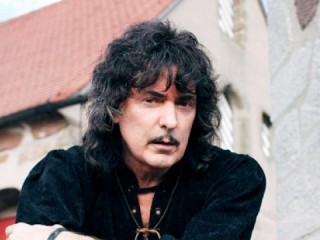
Ritchie Blackmore biography
Date of birth : 1945-04-14
Date of death : -
Birthplace : Weston-super-Mare, England
Nationality : English
Category : Arts and Entertainment
Last modified : 2012-01-12
Credited as : Singer-songwriter, Guitarist, member of Deep Purple
2 votes so far
Blackmore joined the rock group Deep Purple in 1968 after receiving the invitation from Jon Lord (organs). The band had a hit US single with its remake of the Joe South song "Hush". Purple's early sound leaned on psychedelia and progressive rock. The first line-up recorded a mixture of original and cover materials. This "Mark One" line-up featuring singer Rod Evans lasted until mid-1969 and produced three studio albums.
The second line-up's first studio album, In Rock (1970), changed the band's style, turning it in a hard rock direction. This "Mark Two" line-up featuring singer Ian Gillan lasted until mid-1973, produced four studio albums and had their well-known hit single "Smoke on the Water".
The third line-up's new album was entitled Burn (1974), which featured blues singer, David Coverdale. This "Mark Three" line-up lasted until mid-1975 and produced two studio albums. Blackmore publicly disliked the funky soul influences that Coverdale and bassist/vocalist Glenn Hughes injected into the band.Following its conclusion, he abandoned the band to front a new group, Rainbow.
Blackmore originally planned to make a solo album, but instead in 1975 formed his own band Ritchie Blackmore's Rainbow, later shortened to Rainbow. Featuring American vocalist Ronnie James Dio and his blues rock band Elf as session musicians, this first line-up never performed live. Rainbow's music was partly inspired by classical music since Blackmore started playing cello to help him construct interesting chord progressions in private time.
In 1984, Blackmore joined a reunion of the former Deep Purple "Mark Two" line-up featuring singer Ian Gillan and recorded new material. This reunion line-up lasted until 1989 and produced two studio albums.
The next line-up recorded one album entitled Slaves & Masters (1990), which featured former Rainbow vocalist Joe Lynn Turner. The album's style differed from the traditional Purple sound. Subsequently, the former "Mark Two" line-up reunited for a second time in late 1992 and produced one studio album. Following its conclusion, Blackmore left the band for good on November 1993.
Over the years Rainbow went through many personnel changes with no two studio albums featuring the same line-up: Blackmore was the sole constant band member. While with Rainbow he changed his musical approach multiple times following each lead singer's departure and it is said that the result was the confusion and alienation of many of his supporters.
The second release, entitled Under a Violet Moon (1999) continued in the same folk-rock style, with Night's vocals remaining a prominent feature of the band's style.
















